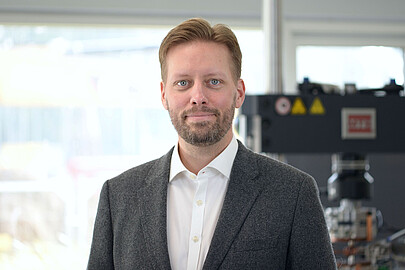


The basis of many properties of materials is rooted in their crystalline structure. The composition of phases within a material and their concentration can be decisive for the mechanical properties. The characteristic crystal structure of materials can be visualized and analyzed by X-ray diffraction (XRD). Likewise, preferential orientations and residual stresses introduced by manufacturing processes can be determined. At the IW, small powder quantities as well as components with a mass of up to 5 kg can be examined.
In addition, the X-ray microscopy (XRM) imaging technique allows material properties to be examined by X-rays in a similar way to the CT method. Compared to the CT method, significantly higher resolutions (down to 0.8 µm) are achieved, so that the correlation of physical properties with microstructures is possible, for example, by observing the grain size distribution, the texture or the distribution of pores.
The basis of many properties of materials is rooted in their crystalline structure. The composition of phases within a material and their concentration can be decisive for the mechanical properties. The characteristic crystal structure of materials can be visualized and analyzed by X-ray diffraction (XRD). Likewise, preferential orientations and residual stresses introduced by manufacturing processes can be determined. At the IW, small powder quantities as well as components with a mass of up to 5 kg can be examined.
In addition, the X-ray microscopy (XRM) imaging technique allows material properties to be examined by X-rays in a similar way to the CT method. Compared to the CT method, significantly higher resolutions (down to 0.8 µm) are achieved, so that the correlation of physical properties with microstructures is possible, for example, by observing the grain size distribution, the texture or the distribution of pores.
CONTACT PERSON FOR THE TECHNOLOGY OF MATERIALS (TW) DIVISION


30823 Garbsen

























